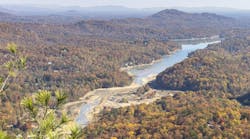Water covers approximately 70 percent of the Earth’s surface, and the remaining land-covered portion is undergoing rapid development. The subsequent loss of greenery and increase in impervious surface coverage places a significant strain on natural drainage patterns, a problem further exacerbated by aging infrastructure and global climate change. (The Intergovernmental Panel on Climate Change predicted in 2007 that the chance of heavy precipitation events continuing to occur more frequently is “very likely.”)
Issues like these are no small feats to overcome. That is why, in addressing them, we must look beyond our communities, states, nations and even continents and consider water quality on a global level. The preservation of wildlife, recreation, properties, scenery, drinking water and human health and safety depend on it.
Storm water-related issues—think flooding, erosion, runoff pollutants, etc.—are moving up on political agendas worldwide as leaders take note of potentially costly and devastating effects. We would be hard-pressed to find a nation or even a city on the map that does not struggle with at least one such problem.
Some wide-reaching industry initiatives worth noting:
- The Global Rain Harvesting Collective partners with governments and groups from Ethiopia, Nepal, India, Germany, Northern Ireland and many more nations to provide drinking water to shortage-stricken schools worldwide via rooftop and open-well rain harvesting.
- Canada and the U.S., under the U.S. Environmental Protection Agency Great Lakes Water Quality Agreement, meet biennially and implement management plans and programs to protect the chemical, physical and biological integrity of the Great Lakes Basin ecosystem they border.
- The International Erosion Control Association recently launched its Save Our International Land Fund, which will support environmental programs and projects that address erosion and sediment control issues through education, research and applied technology.
SWS has featured editorial content addressing international storm water trends and events, from using calibration to prevent flooding in low-lying Holland to treating runoff with upflow filters in New Zealand’s Hauraki Gulf. The editorial staff promises to deliver more storm water world news via the magazine and its e-products because international storm water recognition, research and guidance are key to protecting the water we so greatly depend on.
The collaboration of industry professionals, academics and legislators from all corners of the globe will promote an exchange of information, methods and ideas that can only move storm water progress further along. That said, educating oneself about the worldwide storm water industry and playing a role in international efforts (i.e., research projects, conferences, tradeshows and associations) is not just a fine idea … it’s a responsibility.
Download: Here

